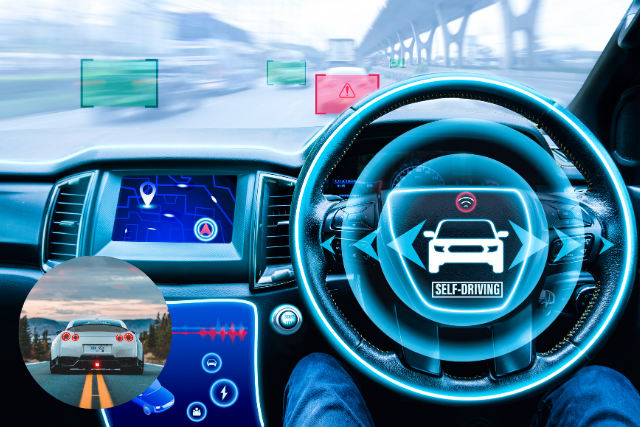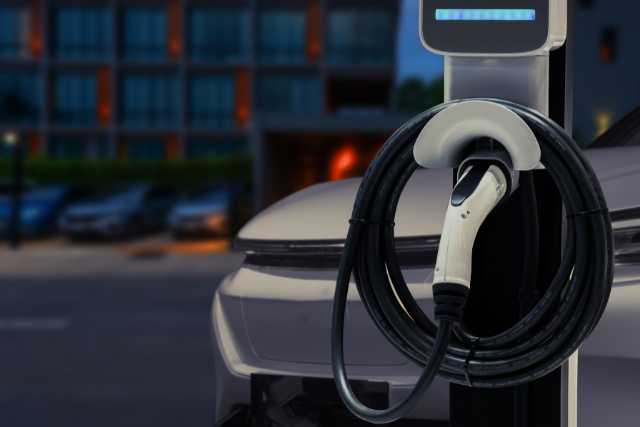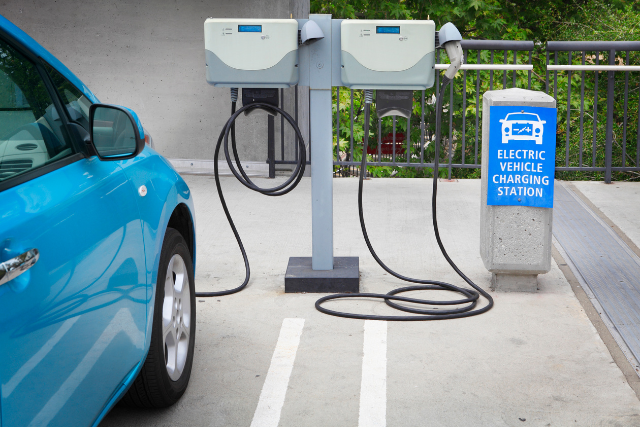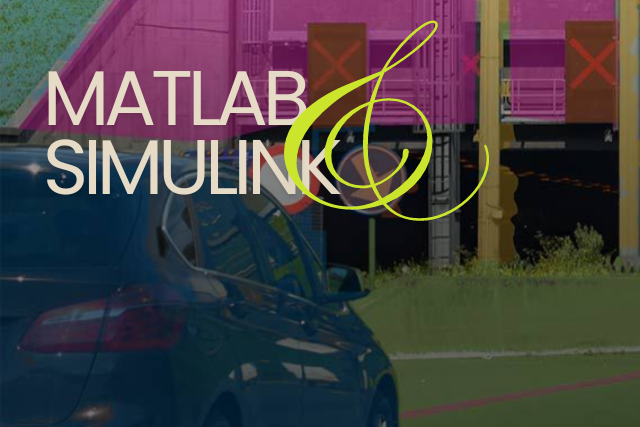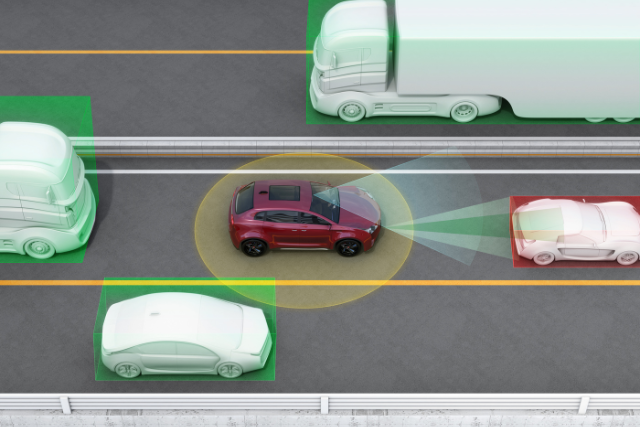Vehicle automation has significantly evolved over the past few decades, transitioning from basic driver assistance systems to sophisticated self-driving technologies.
Understanding the stages of vehicle automation is essential to grasp the advancements in automotive technology and their implications for safety, convenience, and the future of transportation.
This guide explores the various levels of vehicle automation, their characteristics, benefits, challenges, and future trends.
Table of Contents
Introduction to Vehicle Automation
Vehicle automation uses technology to assist or replace human drivers in controlling a vehicle. The Society of Automotive Engineers (SAE) has defined six levels of automation, ranging from Level 0 (no automation) to Level 5 (full automation).
These levels provide a framework for understanding the progression of autonomous vehicle technology.
Importance of Vehicle Automation
Vehicle automation is crucial for several reasons:
- Safety: Reduces human error, which is a significant cause of accidents.
- Efficiency: Optimizes driving patterns to improve fuel efficiency and reduce traffic congestion.
- Convenience: Enhances the driving experience by automating repetitive and stressful tasks.

Levels of Vehicle Automation
The SAE International standard J3016 categorizes vehicle automation into six levels. Each level represents a step towards fully autonomous vehicles, with varying degrees of driver intervention required.
Level 0: No Automation
At Level 0, there is no automation, and the driver is entirely responsible for controlling the vehicle. Any assistance, such as warnings or momentary intervention, does not count as automation.
Characteristics:
- Driver Control: Full control of steering, braking, and acceleration.
- Assistance Systems: This may include basic features like warning alarms.
Level 1: Driver Assistance
Level 1 automation includes systems that can assist with steering or acceleration/deceleration, but not simultaneously. The driver must remain engaged and monitor the environment at all times.
Characteristics:
- Partial Assistance: Features like adaptive cruise control or lane-keeping assist.
- Driver Engagement: Continuous monitoring and control are required.
Level 2: Partial Automation
At Level 2, the vehicle can simultaneously control both steering and acceleration/deceleration under certain conditions. However, the driver must remain attentive and ready to take control if necessary.
Characteristics:
- Combined Functionality: Systems like Tesla Autopilot and GM Super Cruise.
- Driver Monitoring: Driver must remain engaged and monitor the environment.
Level 3: Conditional Automation
Level 3 automation allows the vehicle to manage all driving tasks under specific conditions, such as highway driving. The driver must be ready to intervene when requested by the system.
Characteristics:
- Automated Driving: Systems like Audi Traffic Jam Pilot.
- Driver Readiness: The driver can disengage but must be available to take over when prompted.
Level 4: High Automation
At Level 4, the vehicle can handle all driving tasks without human intervention in most situations. However, there are still scenarios where human control might be required, such as in adverse weather or off-road conditions.
Characteristics:
- Full Autonomy in Specific Conditions: Autonomous shuttles and city taxis.
- Fallback Mechanism: The vehicle can safely stop if human intervention is unavailable.
Level 5: Full Automation
Level 5 represents full automation, where the vehicle is entirely autonomous and does not require any human intervention. These vehicles are designed to operate in all conditions and environments.
Characteristics:
- Complete Autonomy: No steering wheel or pedals are required.
- Universal Operation: Capable of driving in all scenarios, including off-road and extreme weather.
Table 1: Levels of Vehicle Automation
| Level | Name | Description | Examples |
|---|---|---|---|
| Level 0 | No Automation | Driver fully controls the vehicle | Basic warning systems |
| Level 1 | Driver Assistance | Assistance with either steering or acceleration | Adaptive cruise control |
| Level 2 | Partial Automation | Combined control of steering and acceleration | Tesla Autopilot, GM Super Cruise |
| Level 3 | Conditional Automation | Complete control in most situations, human fallback | Audi Traffic Jam Pilot |
| Level 4 | High Automation | Full control in most situations, human fallback | Autonomous shuttles, city taxis |
| Level 5 | Full Automation | Complete autonomy in all conditions | Fully autonomous vehicles |
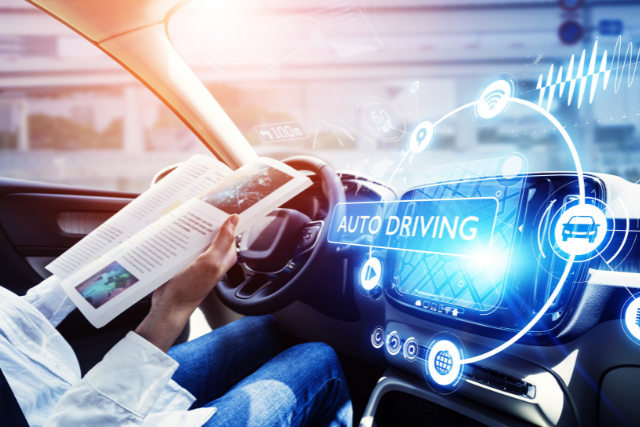
Benefits of Vehicle Automation
The transition through the stages of vehicle automation brings several significant benefits to drivers, passengers, and society.
Enhanced Safety
Automated systems can significantly reduce the number of accidents caused by human error, such as distracted driving, fatigue, or impaired judgment. Advanced sensors and algorithms can detect hazards and react faster than human drivers.
Improved Traffic Flow
Automation can optimize driving patterns, reduce traffic congestion, and improve the overall efficiency of transportation systems. Vehicles and traffic infrastructure can communicate with each other to coordinate movements and reduce bottlenecks.
Fuel Efficiency
Automated vehicles can drive more efficiently by maintaining optimal speeds and avoiding unnecessary acceleration and braking. This can lead to significant fuel savings and reduced emissions.
Increased Accessibility
Vehicle automation can provide mobility solutions for individuals who cannot drive, such as the elderly or disabled. Autonomous vehicles can offer door-to-door transportation, improving independence and quality of life.
Convenience and Comfort
Automating driving tasks can reduce the stress and fatigue of long drives and daily commutes. Drivers can relax, work, or engage in other activities while the vehicle handles the driving.
Challenges and Limitations of Vehicle Automation
Despite the numerous benefits, vehicle automation also presents challenges and limitations that must be addressed.
Technological Complexity
Developing reliable and safe autonomous systems requires advanced technology and significant computational power. Ensuring these systems can handle complex driving environments and unpredictable situations is challenging.
Safety and Reliability
Automated vehicles must be able to operate safely and reliably in all conditions. Ensuring the robustness of sensors, algorithms, and control systems is critical to prevent accidents and failures.
Legal and Regulatory Issues
The deployment of autonomous vehicles raises several legal and regulatory questions, such as liability in the event of an accident and the establishment of safety standards. Governments and regulatory bodies need to develop frameworks to address these issues.
Cybersecurity
As vehicles become more connected and automated, they become potential cyber-attack targets. Ensuring the cybersecurity of autonomous systems is essential to protect against unauthorized access and malicious activities.
Public Acceptance
Gaining public trust and acceptance of autonomous vehicles is crucial for widespread adoption. Educating the public about the safety and benefits of automated systems can help alleviate concerns and build confidence.
Future Trends in Vehicle Automation
The future of vehicle automation is promising, with ongoing advancements and innovations set to transform transportation further.

Integration with Smart Infrastructure
Integrating autonomous vehicles with smart infrastructure, such as connected traffic lights and intelligent roadways, will enhance the efficiency and safety of transportation systems. This connectivity will enable vehicles to communicate with their surroundings and optimize their movements.
Advances in Artificial Intelligence
Improvements in artificial intelligence (AI) and machine learning will enhance the capabilities of autonomous systems. AI algorithms will become more sophisticated, enabling better decision-making and handling of complex driving scenarios.
Expansion of Autonomous Mobility Services
Deploying autonomous mobility services such as robot taxis and shuttles will provide convenient and cost-effective transportation options. These services will become more prevalent in urban areas, reducing the need for private vehicle ownership.
Development of New Business Models
The rise of autonomous vehicles will lead to the development of new business models, such as mobility-as-a-service (MaaS) and subscription-based transportation. These models will offer flexible and on-demand transportation solutions.
Enhanced Safety Features
Future autonomous vehicles will have advanced safety features, such as redundant systems and fail-safe mechanisms. These enhancements will ensure that autonomous vehicles can operate safely even during system failures.
Table 2: Future Trends in Vehicle Automation
| Trend | Description |
|---|---|
| Integration with Smart Infrastructure | Enhanced connectivity with traffic lights and roadways |
| Advances in Artificial Intelligence | Improved decision-making and handling of complex scenarios |
| Expansion of Autonomous Mobility Services | Increased deployment of robo-taxis and autonomous shuttles |
| Development of New Business Models | Emergence of mobility-as-a-service and subscription-based transportation |
| Enhanced Safety Features | Advanced safety systems and fail-safe mechanisms |
FAQs
1. What are the stages of vehicle automation?
The stages of vehicle automation, as defined by SAE International, include six levels: Level 0 (No Automation), Level 1 (Driver Assistance), Level 2 (Partial Automation), Level 3 (Conditional Automation), Level 4 (High Automation), and Level 5 (Full Automation). Each level represents a step towards fully autonomous vehicles with decreasing levels of driver intervention.
2. What are the benefits of vehicle automation?
The benefits of vehicle automation include enhanced safety, improved traffic flow, increased fuel efficiency, greater accessibility for individuals unable to drive, and increased convenience and comfort for drivers and passengers.
3. What challenges does vehicle automation face?
Vehicle automation faces challenges such as technological complexity, ensuring safety and reliability, addressing legal and regulatory issues, protecting against cybersecurity threats, and gaining public acceptance.
4. How does artificial intelligence contribute to vehicle automation?
Artificial intelligence (AI) contributes to vehicle automation by enabling advanced algorithms to process sensor data, make decisions, and handle complex driving scenarios. AI improves the accuracy, efficiency, and reliability of autonomous systems.
5. What is the role of smart infrastructure in vehicle automation?
Smart infrastructure, such as connected traffic lights and intelligent roadways, enhances vehicle automation by enabling communication between vehicles and their surroundings. This connectivity optimizes traffic flow and improves safety.
Wrapping It Up!
Looking ahead, the integration of autonomous vehicles with smart infrastructure, advancements in artificial intelligence, and the expansion of autonomous mobility services promise to revolutionize transportation further.
New business models, such as mobility-as-a-service and subscription-based transportation, will emerge, providing flexible and on-demand transportation solutions. Enhanced safety features will ensure that autonomous vehicles can operate safely even during system failures.
Additional Resources
For further reading and exploration into the topic of vehicle automation, consider the following resources:
- SAE International’s J3016 Standard
- National Highway Traffic Safety Administration (NHTSA) on Automated Vehicles
- IEEE Spectrum’s Autonomous Vehicle Hub
- Tesla Autopilot and Full Self-Driving Capability
- General Motors Super Cruise
These resources provide detailed information on the standards, technologies, and innovations shaping the future of autonomous vehicles.

